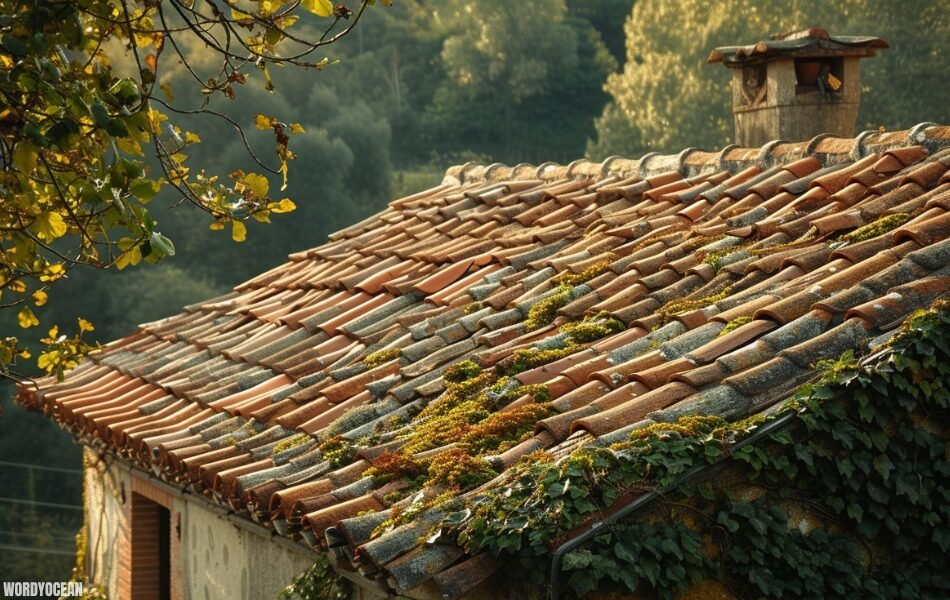Kraage Gaard: A Comprehensive Guide

The term “kraage gaard” evokes images of a bygone era, a time when life was simpler and more closely tied to the rhythms of nature. Though it may sound like a relic of the past, its echoes still resonate in the cultural tapestry of certain regions.
At its core, “krage gaard” refers to a traditional Scandinavian farmhouse, a structure that has stood the test of time, weathering countless seasons. It’s more than just a building; it’s a symbol of heritage, a testament to the ingenuity and resilience of generations past. These farmhouses were often constructed using local materials, such as wood and stone, and were designed to withstand the harsh Nordic climate.
In the following sections, we’ll delve deeper into the history, architecture, and cultural significance of “kraage gaard,” exploring its enduring legacy and its impact on modern Scandinavian society.
The Origins of Kraage Gaard
The concept of “krage gaard” is deeply rooted in the Viking Age and the subsequent medieval period of Scandinavian history. These were times of great upheaval and transformation, characterized by exploration, trade, and cultural exchange. The Viking Age, in particular, saw the Norse people venturing far and wide, establishing settlements and trading networks across Europe. As they settled, they brought with them their distinctive architectural style, which would evolve into the “krage gaard.”
The term “kraage gaard” is a compound word, composed of two elements: “kraage” and “gaard.” “Kraage” is an Old Norse word that refers to a crow or raven, while “gaard” simply means a farm or homestead. The association with crows is likely due to their prevalence in the Scandinavian landscape and their symbolic significance in Norse mythology.
Kraage gard held significant cultural importance for the Scandinavian people. These farms were not merely places of production but also centers of community and cultural identity. They were often fortified, reflecting the turbulent times in which they were built. The layout of the farms, with their central courtyard and surrounding buildings, was carefully designed to optimize functionality and defense.
Moreover, kraage gard played a crucial role in preserving traditional skills and knowledge. These farms were often passed down through generations, with each new generation inheriting the wisdom and expertise of their ancestors. This continuity helped to ensure the survival of traditional crafts, such as woodworking, metalworking, and textile production.
The Practical Applications of Kraage Gaard
Traditional Uses
While “kraage gaard” primarily refers to a type of farmhouse, it also encompasses the broader lifestyle and practices associated with rural Scandinavian life. Traditional kraage gaard households were self-sufficient, producing their own food, clothing, and tools. Agriculture was central to their livelihood, with crops like barley, rye, and oats cultivated in surrounding fields. Livestock, such as cows, sheep, and pigs, provided meat, milk, and wool.
The interiors of kraage gaard were often adorned with intricate wood carvings and textiles, reflecting the skill and creativity of the inhabitants. These homes were not just functional but also beautiful, serving as a testament to the craftsmanship of the people.
Modern Interpretations
In contemporary times, the concept of “krage gaard” has been reimagined and adapted to suit modern lifestyles. Many people are drawn to the simplicity and sustainability of traditional Scandinavian living. This has led to a resurgence of interest in traditional building techniques, with some homeowners choosing to construct their own kraage gaard-inspired houses.
Moreover, the aesthetic of krage gaard has influenced interior design trends. Scandinavian minimalism, characterized by clean lines, natural materials, and a focus on functionality, has gained global popularity. The use of wood, stone, and other natural elements in interior design is a direct nod to the traditional kraage gaard aesthetic.
Additionally, the concept of “hygge,” a Danish and Norwegian word for a mood of coziness and comfortable conviviality with feelings of wellness and contentment, is closely linked to the krage gaard lifestyle. This emphasis on creating warm and inviting spaces has inspired interior design trends that prioritize comfort, simplicity, and a connection to nature.
Kraage Gard in Popular Culture
Literary References
While the term “krage gaard” may not be explicitly mentioned in many literary works, the concept of the traditional Scandinavian farmhouse has permeated literature for centuries. Norse mythology, with its tales of gods and heroes, often features descriptions of grand halls and homesteads that bear striking similarities to kraage gaard. These literary depictions, though often imbued with mythical elements, provide valuable insights into the cultural significance of these structures.
Folklore and Mythology
In Scandinavian folklore and mythology, the farmhouse often serves as a microcosm of the cosmos, connecting the earthly realm to the divine. Tales of trolls, elves, and other mythical creatures frequently involve encounters within or around these ancient structures. These stories not only entertain but also convey important lessons about nature, community, and the balance between human and supernatural forces.
Modern Media
In recent decades, the allure of the krage gaard has captured the imagination of filmmakers and television producers. Historical dramas set in Scandinavian settings often feature these traditional farmhouses, showcasing their unique architectural style and the way of life associated with them. Such depictions help to preserve the cultural heritage of these structures and inspire a new generation to appreciate their beauty and significance.
Furthermore, the minimalist aesthetic of Scandinavian design, inspired by the simplicity and functionality of kraage gaard, has influenced various aspects of modern culture, including fashion, interior design, and lifestyle trends. This enduring appeal demonstrates the timeless quality of the kraage gaard and its ability to resonate with contemporary audiences.
The Future of Kraage Gaard
As the world becomes increasingly industrialized and urbanized, the preservation of traditional structures like kraage gaard has become a pressing concern. Many organizations and individuals are dedicated to preserving these historic buildings and ensuring their legacy for future generations. Efforts include restoration projects, heritage tourism initiatives, and educational programs that promote awareness of traditional building techniques and cultural heritage.
While the traditional role of kraage gaard has evolved, its core principles of sustainability and self-sufficiency remain relevant today. In an era of climate change and resource depletion, there is a growing interest in sustainable living practices. Kraage gaard can serve as a model for eco-friendly housing, with its emphasis on natural materials, energy efficiency, and harmonious integration with the natural environment.
Moreover, the minimalist aesthetic and functional design of kraage gaard can inspire contemporary architecture and interior design. By incorporating traditional elements into modern buildings, we can create spaces that are both beautiful and sustainable.
The krage gaard, with its rich history and enduring appeal, offers valuable lessons for the present and future. By understanding the past, we can shape a more sustainable and culturally rich future. Whether it’s through preservation efforts, innovative applications, or simply appreciating its aesthetic beauty, the legacy of the kraage gaard continues to inspire and enrich our lives.
FAQs
Q: What is Kraage Gaard?
A: Kraage Gard is a traditional Scandinavian farmhouse, symbolizing heritage and the ingenuity of past generations. It’s more than a building; it’s a cultural icon representing self-sufficiency and connection to nature.
Q: What are the origins of Kraage Gaard?
A: The roots of Kraage Gaard lie in the Viking Age and medieval Scandinavian history. These farmhouses were often fortified and designed to withstand harsh climates. The term “Kraage Gaard” itself is a combination of Old Norse words, with “kraage” referring to a crow or raven and “gaard” meaning farm or homestead.
Q: How was Krage Gaard traditionally used?
A: Traditionally, Kraage Gaard served as self-sufficient farms, producing food, clothing, and tools. They were centers of community and cultural identity, preserving traditional skills and knowledge. The interiors often featured intricate wood carvings and textiles, reflecting the craftsmanship of the inhabitants.
Q: How is Kraage Gaard interpreted in modern times?
A: In contemporary times, Kraage Gaard inspires modern lifestyles. Many people are drawn to its simplicity and sustainability, leading to a resurgence of interest in traditional building techniques. The minimalist Scandinavian design, influenced by Krage Gaard, has gained global popularity. The concept of “hygge,” associated with coziness and contentment, is also linked to the Kraage Gard lifestyle.





